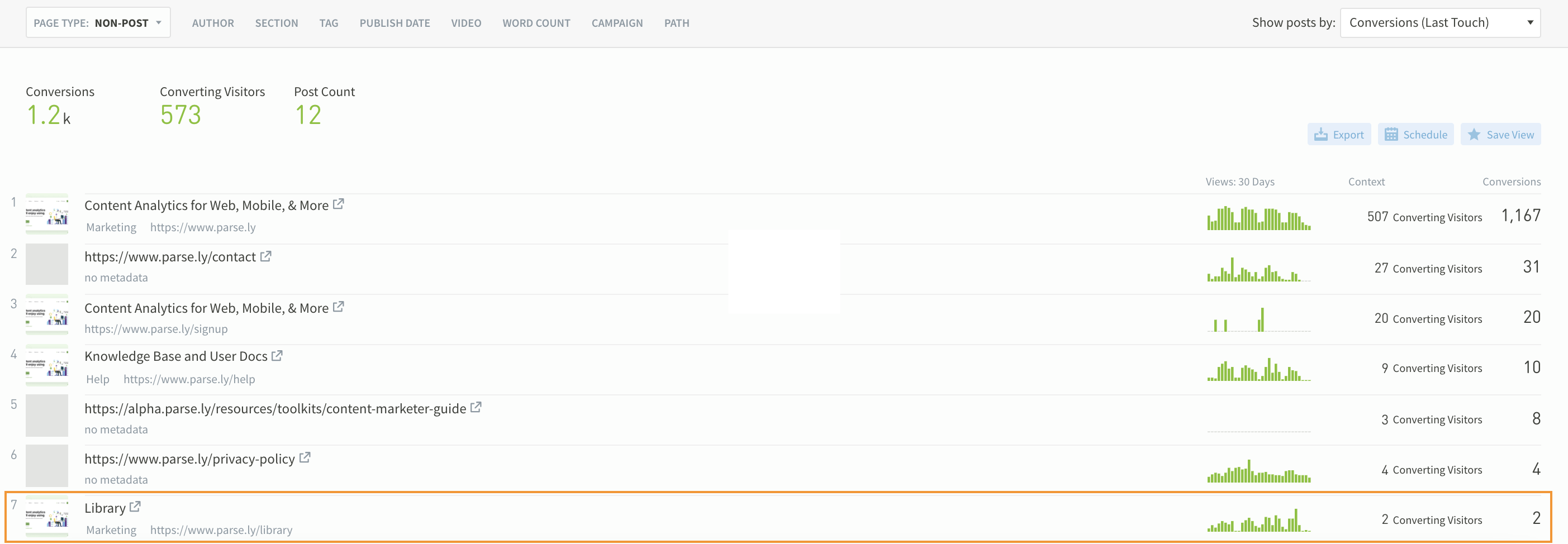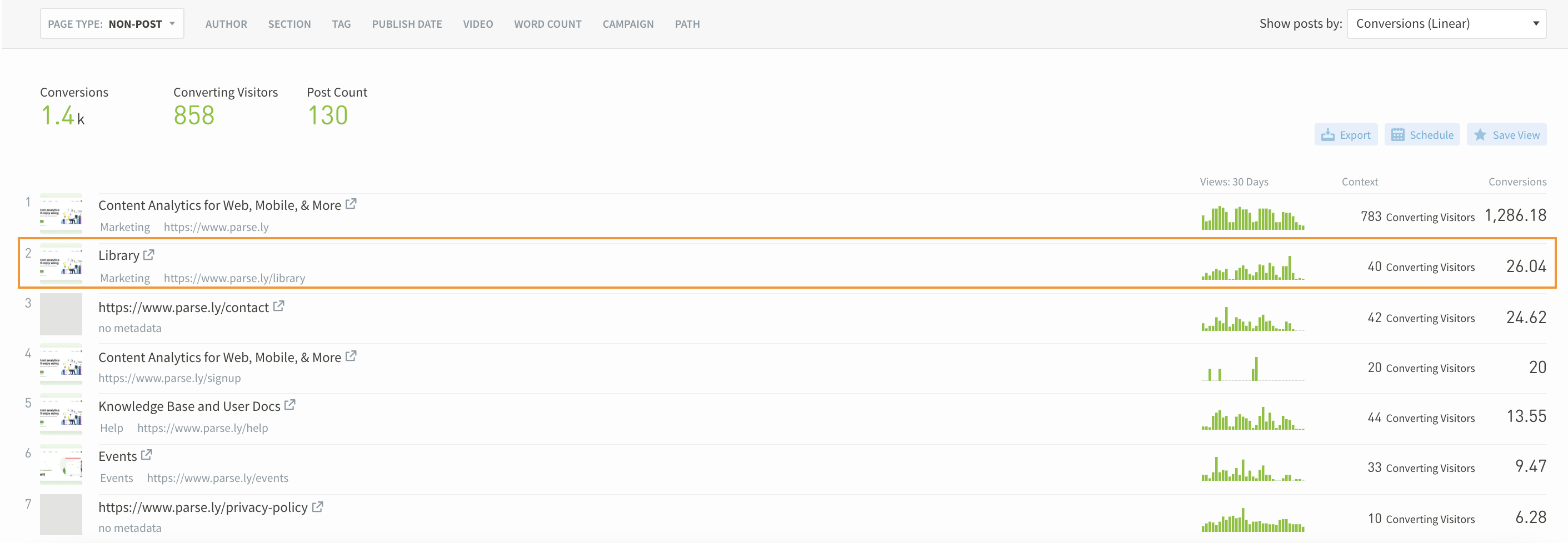Measuring the ROI of Content Marketing with True Engagement Metrics

Updated April 2023
What is content marketing ROI?
Content marketing ROI is the ratio that shows the revenue your business earned when compared to what you spent on content marketing.
ROI (return on investment) from content marketing has been notoriously difficult for marketers to measure and track because the journey from content to revenue isn’t always straight or quick. Content marketing is a long-term game, and, unlike things like pay-per-click ads, attribution can be harder to determine.
Table of Contents
- Calculating content marketing ROI
- Using content analytics to track the ROI of content marketing
- An attribution model designed for content, not ads
- Content-specific conversion categories
- Beyond ROI and conversion: engaged time
- Customers engage with content at every stage of their journey
- Why Google Analytics is insufficient for tracking content marketing ROI
- Measuring content marketing ROI with Parse.ly content analytics
Calculating content marketing ROI
Content marketing ROI success can mean a lot of things. How you measure it depends on your objectives, but you can apply the standard ROI formula to get a rough idea of how your content impacts revenue generation.
Calculate the cost of producing your content, add the cost of distribution, and subtract that total from the top-line profit made over the same period.

An example:
If you spend $500 on creating content and acquire leads worth $2,000, your ROI is 300%.
(Return) $2,000 – (Investment) $500 = $1,500
$1500 / $500 = 3
3 x 100% = 300% (ROI)
Simple, right? The problem is, there are a couple of glitches with this ROI calculation:
- This formula is for the total investment—not just the cost of producing one piece of content.
- Money is not the only measure of a successful return.
Using content analytics to track the ROI of content marketing
Content-specific analytics tools like Parse.ly are designed for content-driven businesses and simplify tracking content marketing ROI. In Parse.ly, you can use two content-team-specific features—linear attribution models and content-specific conversion categories—within Parse.ly Content Conversions to measure and track your content marketing ROI.
An attribution model designed for content, not ads
Content supports the sales cycle at many points. Prospects who interact with your content will not always go directly to a sale, but they may take baby steps toward an eventual purchase each time they visit your blog.
That’s why attributing content to ROI requires a custom-built model that maps how content leads to revenue-related conversion events over time on a granular article-by-article level.
With Parse.ly Content Conversions, you can leverage the linear model, which gives credit to every page viewed within 30 days of a conversion, except the page where the final conversion occurred.
That differentiates linear from the default last-touch attribution models offered in Google Analytics.
With this model, content marketers can see a full mapping of all the content visited along the path to conversion. This allows you to identify each page’s individual role in generating revenue.
Take Parse.ly’s content library page, for example. When we use last-touch attribution, we see that only two users converted on the content library page:

But when we combine that with data from the linear model, we see that our content library page was the second most-visited page before site users made a conversion:

The linear model here reveals that a large portion of visitors check out our archive of resources, like guides, data studies, and customer stories before converting. That’s a powerful way to understand our content’s impact on the bottom line.
Content-specific conversion categories
Content teams need to track various types of conversion from content, not just conversion to purchase. A newsletter sign-up conversion from a top-of-funnel piece of content, for example, could be a leading indicator of eventual revenue. Parsing the impact of content at different milestones throughout the sales cycle gives a more accurate view of content’s ROI.
Parse.ly helps content teams track different steps in the sales cycle with out-of-the-box conversion categories designed for publishers and content teams. Alongside purchase event conversions, you can use custom conversion categories to measure:
- Subscription sign-ups
- Newsletter sign-ups
- Lead generation form-fills
- Link clicks (useful if you want to track outbound affiliate clicks)
- Any other event that matters to your business’s bottom line

While you won’t see revenue next to each of these conversion events, you’ll have a true picture of how each piece of content moves prospects toward a purchase. Understand what kind of content journey results in the highest-value sales, then optimize your content strategy accordingly.
Beyond ROI and conversion: engaged time
According to Forrester, a consumer engages with 11.4 pieces of content prior to making a purchase. That’s why the content journey is the customer journey.
Content-specific attribution modeling and conversion tracking give you a more accurate picture of how content impacts revenue. But that’s not the whole story.
Customers engage with content at every stage of their journey
A key factor in measuring content marketing ROI is understanding users’ true engagement with your content. True engagement measures not only whether a user clicked but also how long visitors spend actively engaged with your content.
It’s a level higher than conversion in the customer journey, but it’s a crucial piece of the equation.
Parse.ly can show you true engagement through our engaged time metric. We use a “heartbeat” pixel to check in every few seconds and track whether the browser tab is open and whether the user is currently engaging with the page. That means our data isn’t reliant on “exit events.”
Why Google Analytics is insufficient for tracking content marketing ROI
Most companies use Google Analytics (GA) for analytics. But GA wasn’t built to measure content. It is best used for tracking the effectiveness of digital marketing campaigns for ecommerce brands, such as pay-per-click (PPC) and Google Ads.
Yes, there is a way to make GA work for content analytics—but that requires building the content analytics and attribution functionality yourself, not always possible.
Ever hear about the poor content marketer who took 18 months to set up an attribution model that actually showed content marketing ROI? Such tales speak to the fact that Google’s first-touch or last-touch models are fine for tracking ad spend, but fail to show how each piece of content assists in a multi-touch conversion journey.
Worse, if you do go the GA workaround route, you’ll likely encounter 1) manual setup errors and mistracking, 2) broken tracking events or wrongly configured goals that lead to dirty data, and 3) the inability to make data-informed decisions on how to spend your marketing budget.
Measuring content marketing ROI with Parse.ly content analytics
As we’ve seen, Google Analytics wasn’t built for content marketing teams. But that doesn’t stop marketers jumping through hoops and custom dimensions to get some sense of content ROI.
There’s a better way. Marketers should turn to an analytics solution built for content marketing from the ground up. With Parse.ly, you can more accurately and meaningfully define content marketing ROI, relying on that data to make smart content strategy decisions and improve your content’s performance.
Want to learn more about how Parse.ly and Content Conversions can help you track the ROI of your content marketing?